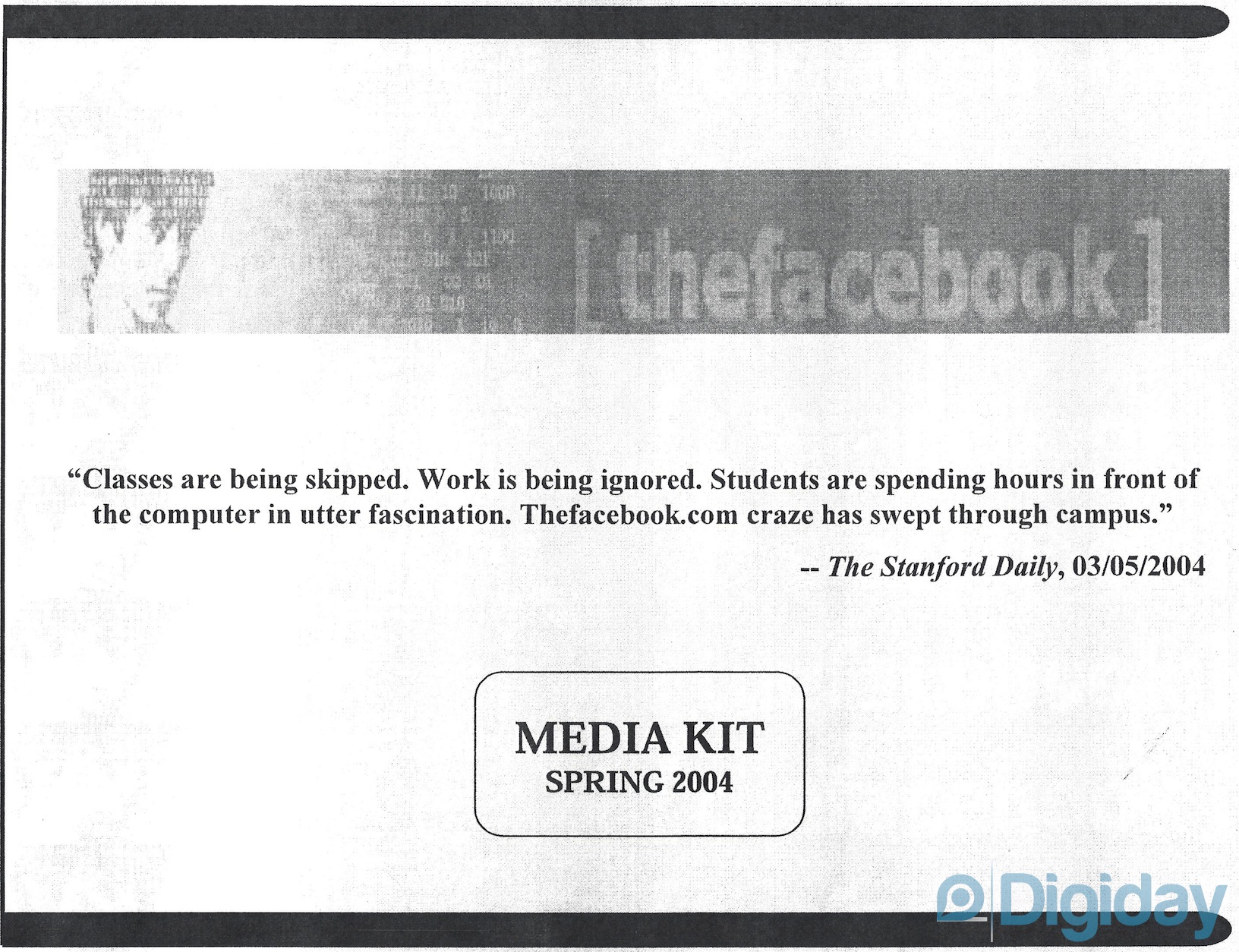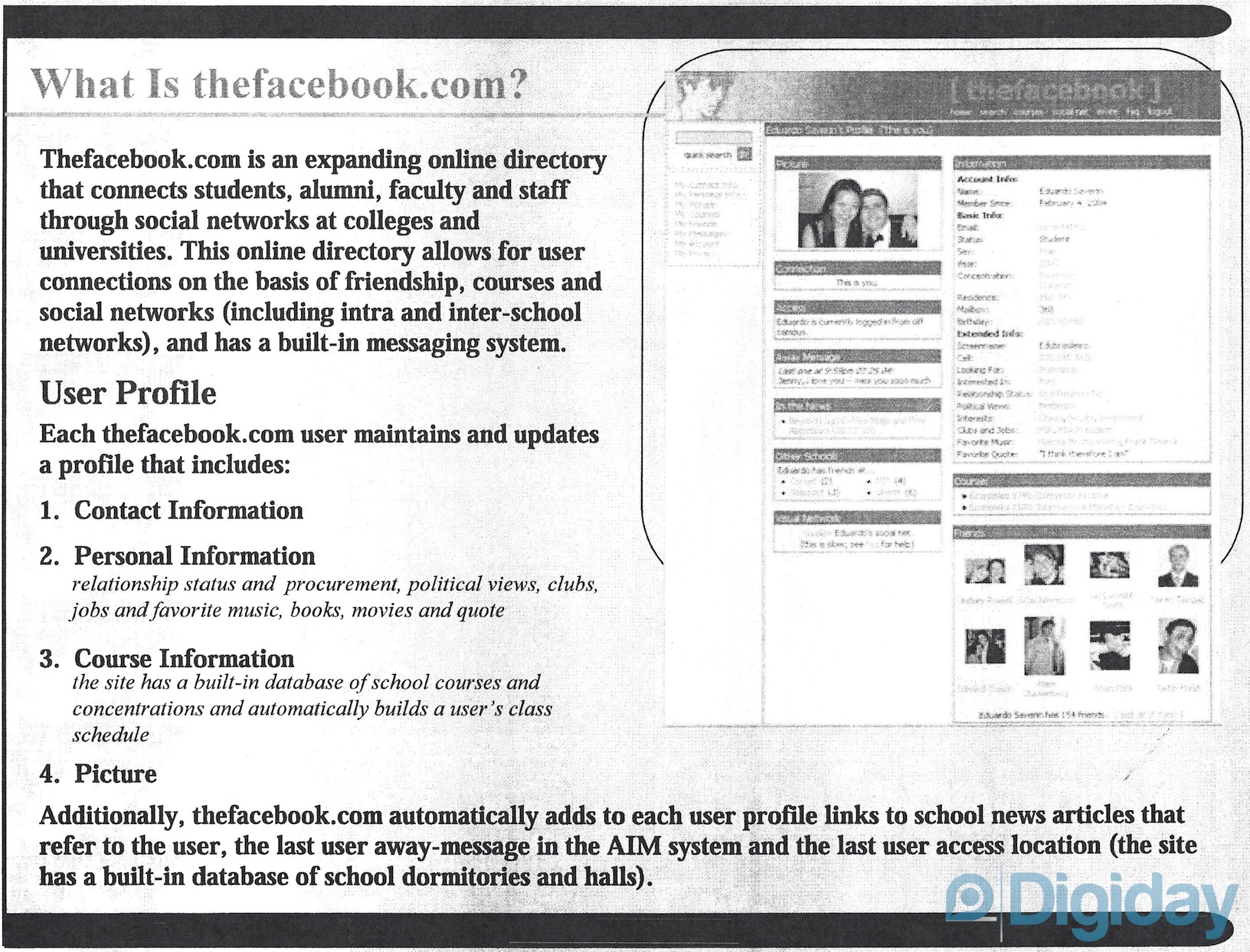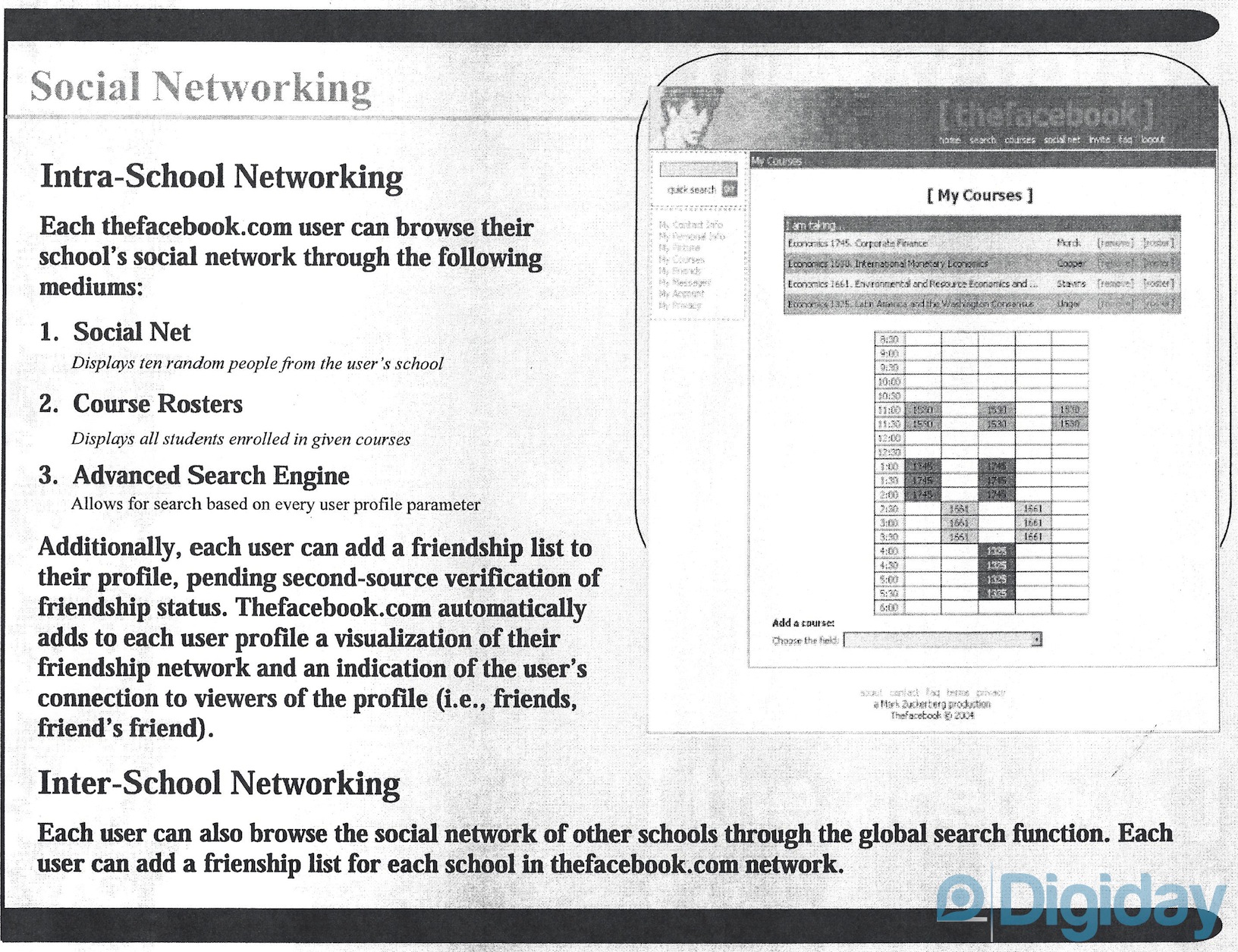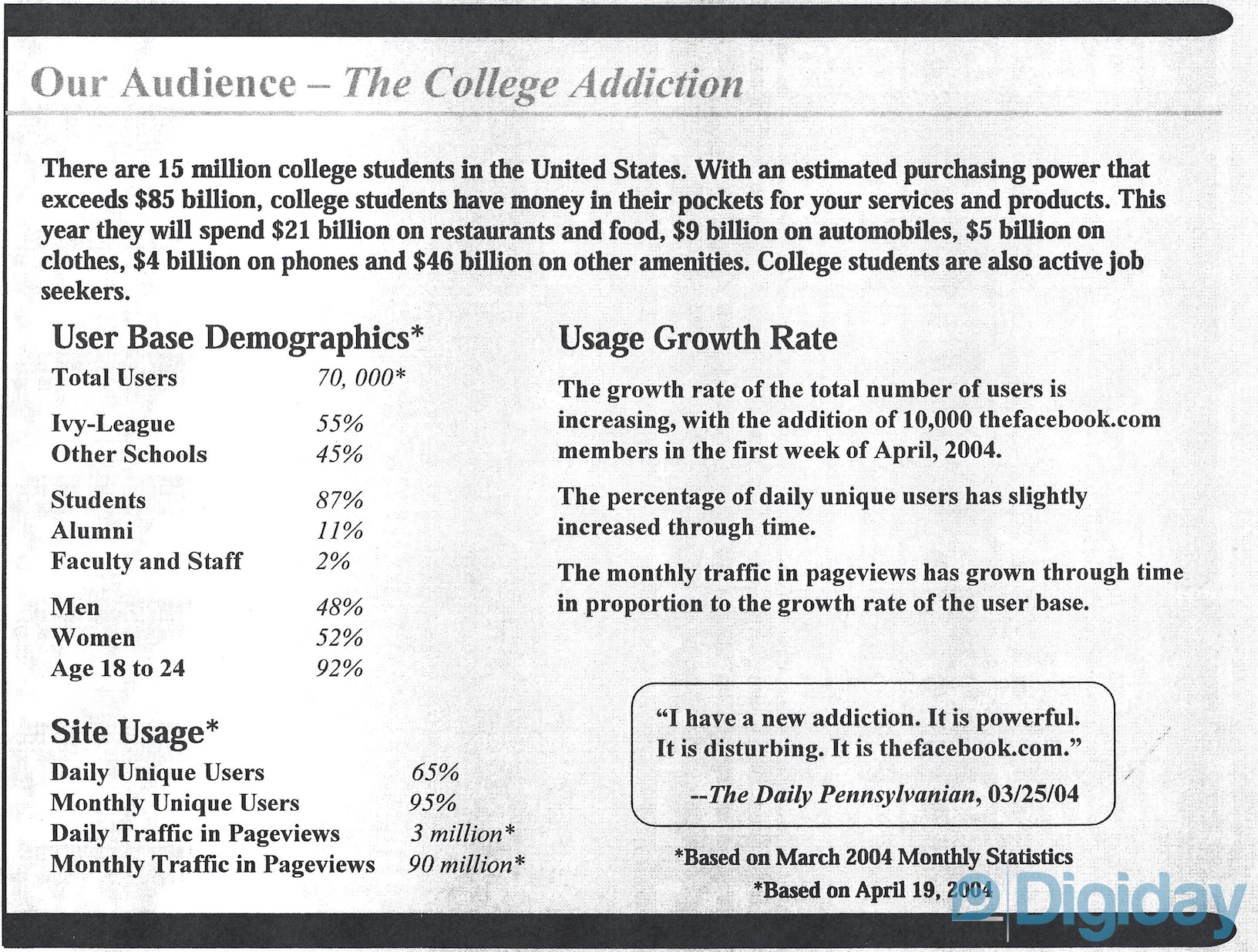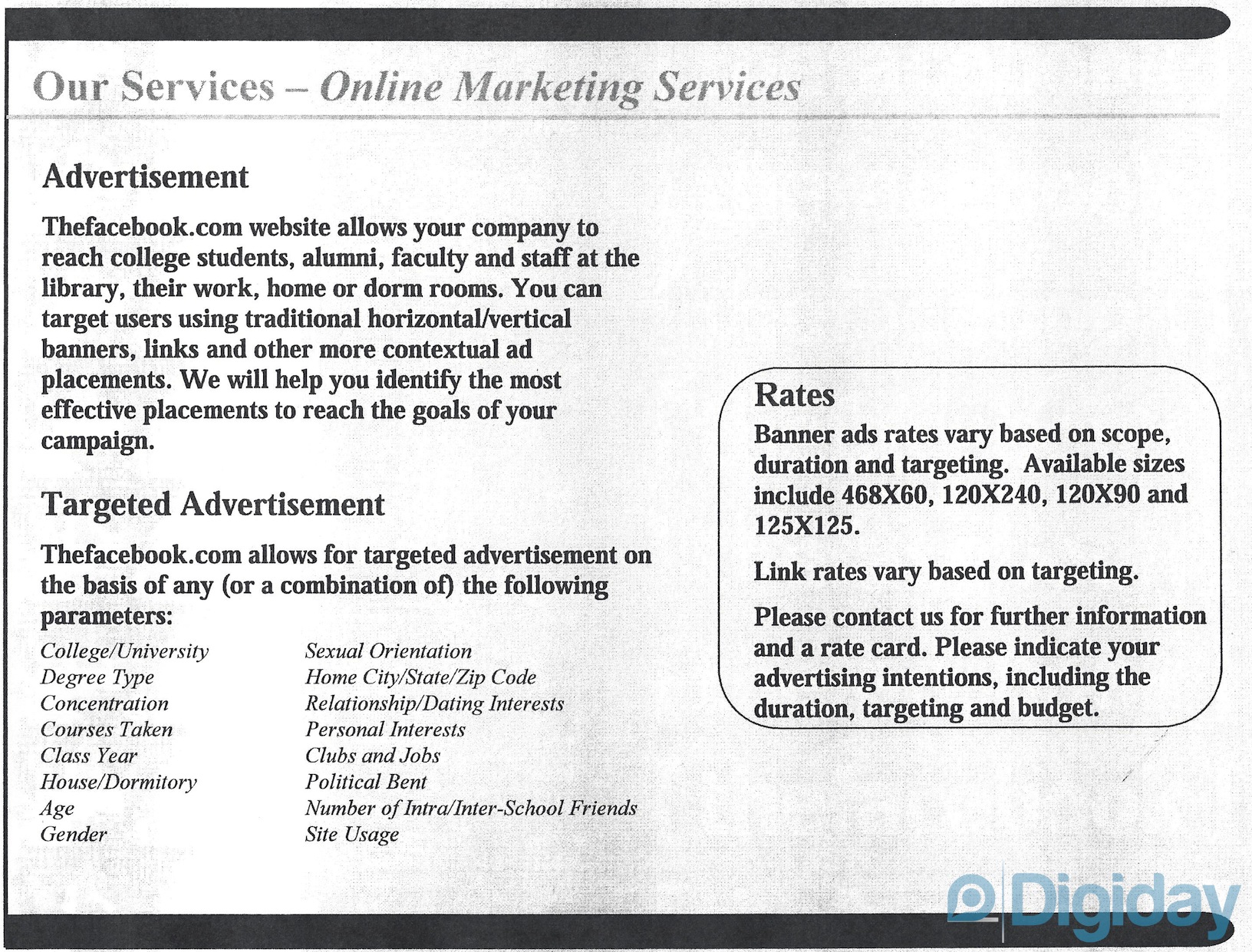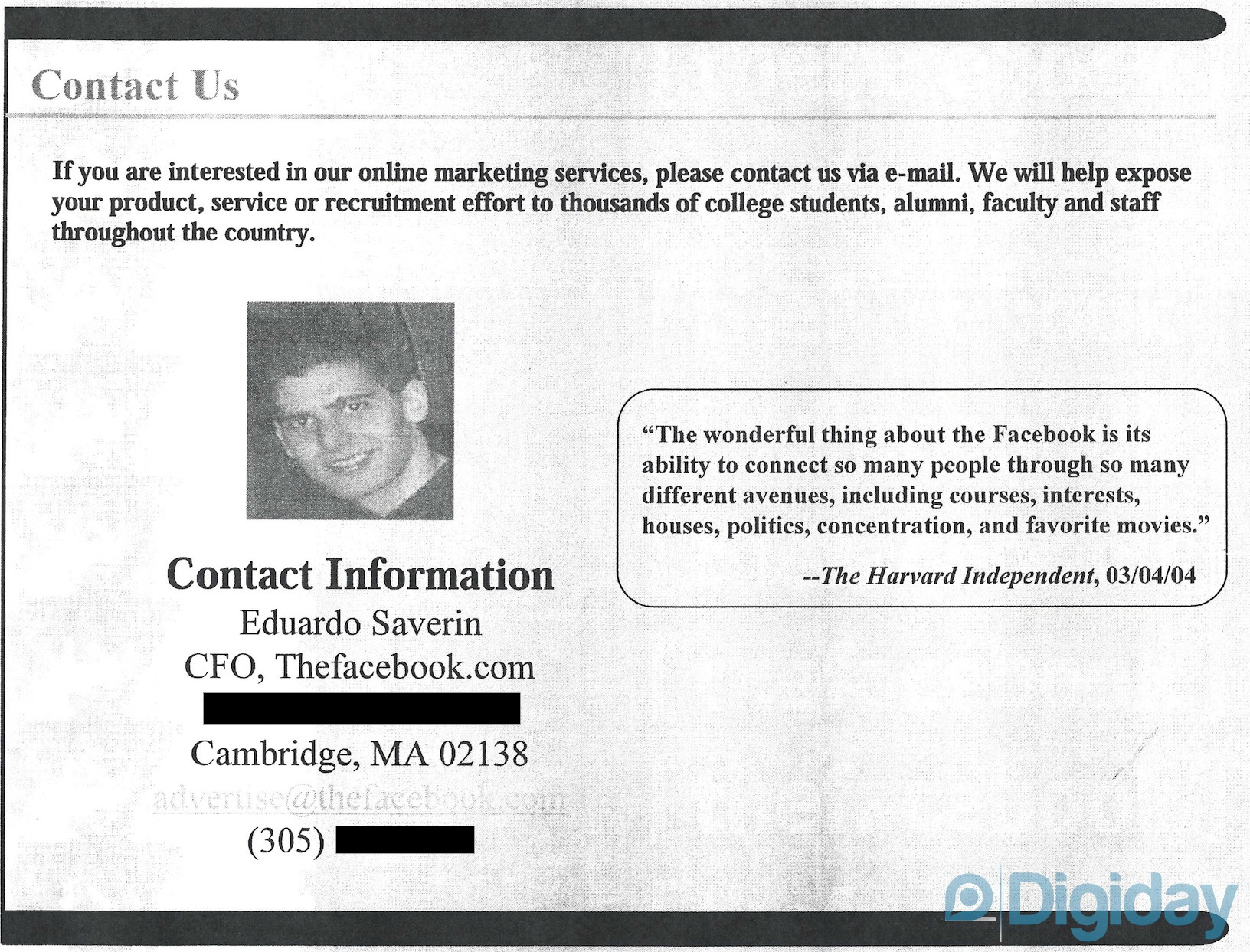Ten passes left to attend the Digiday Publishing Summit
The knock on Facebook is often that it doesn’t have its ad strategy figured out. That might be, but the company courted advertisers pretty much from the get-go.
As captured in “The Social Network,” Facebook’s then-CFO Eduardo Saverin was in New York City right after the launch of TheFacebook, as it was then called, to sell ads. One of those who met with Saverin in April 2004 saved Facebook’s first media kit, which was provided to Digiday.
TheFacebook was a far cry from the global behemoth it is today. Just a bit over two months old, the media kit details its 70,000 users at 20 major colleges. But Facebook’s grand plans are evident in its projections, which include launching in 200 colleges in six months.
Facebook’s original pitch was a bit different than the message it bring to marketers today. For one, Facebook wasn’t urging them to use social ads but instead offered to run IAB standard ad units. Yet Saverin was already emphasizing Facebook’s unique (and personal) data, explaining that marketer’s could target by sexual orientation or even by dorm.
Below is the media kit Saverin was using to pitch potential advertisers that spring, obtained from a New York-based marketer he met with personally. Saverin was asking for ad commitments of around $80,000 for targeted display ad placements that would reach “thousands” of users.
More in Media

Inside the C-Suite: Complex’s new app is the future of its business, CEO says
Amid the pressure to reach readers in the AI era, mobile apps are emerging as one of the channels publishers see new potential.

How Perplexity’s new revenue model works, according to its head of publisher partnerships
Perplexity is opening up a pool of $42.5 million to publishers. Here’s how the new revenue model that’s part of the Comet Plus subscription works, according to Perplexity’s head of publisher partnerships.

Amazon quietly blocks AI bots from Meta, Google, Huawei and more
The change was first spotted by Juozas Kaziukėnas, an independent analyst, who noted that the updated code underlying Amazon’s sprawling website.
